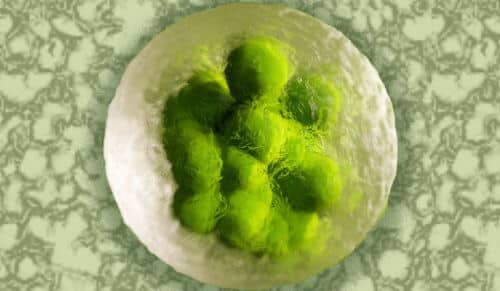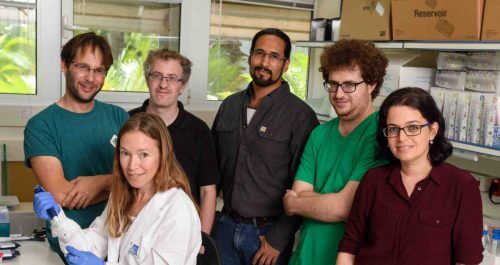Errors in tagging can have far-reaching consequences: they can, among other things, prevent embryonic stem cells from differentiating into the various tissues

The code name of a particularly important chemical tag involved in the control of the human genome is reminiscent of the name of the British Secret Service, but unlike the British Service, m6A's exploits may soon be exposed. In a new study published in the scientific journal Cell, a group of scientists led by Dr. Shraga Schwartz from the Department of Molecular Genetics at the Weizmann Institute of Science developed a way to reveal the distribution of m6A in the cell and decoded the genetic sequence that defines its location.
m6A was discovered almost 50 years ago, but until recently the tools to study it were limited. This tag actually controls the activity of messenger RNA molecules - transient molecules that transfer the recipe for protein production from the DNA to the cell's protein factories. The "m" in his name marks the chemical compound called "methyl group", which is attached to position number 6 of one of the building blocks of RNA - the nucleotide adenosine (A). This attachment will eventually lead to the breakdown of the RNA molecule and prevent the production of the relevant protein. Less than 1% of type A nucleotides in mammals are marked with this tag, but studies have shown that errors in marking can have far-reaching consequences: they can, among other things, prevent embryonic stem cells from differentiating into the various tissues or lead to leukemia.
The existing methods for detecting m6A, which relied on its labeling with antibodies, made it possible to discover its presence, but not to measure its amount in one location or another. In the new study, the scientists developed a quantitative method that does not rely on antibodies and used for this purpose an enzyme that cuts the RNA molecule wherever the ACA nucleotide sequence appears. Previously, scientists discovered that when m6A attaches to the first A in this sequence, the enzyme cannot cut the RNA at that point. Based on this information, the scientists exposed RNA from yeast cells and mammalian cells to the enzyme, and using special algorithms conducted a sequence analysis of the RNA segments - the segments that were cut by the enzyme and those that were not.

Following the analysis, a detailed map of m6A distribution was obtained: to which nucleotides of which RNA molecules does it attach and in what percentage of cases. Furthermore, the analysis allowed the scientists to learn how m6A "chooses" where to attach to the RNA molecule. The binding sites themselves, including the ACA sequence, were previously known, but since there are many more ACA sequences to which the tag does not bind than sequences to which it does bind, this was not enough to define them. In the new study, the scientists deciphered a longer genetic sequence that defines the attachment sites more precisely.
These findings will make it possible to investigate the role of m6A in disease states by determining its distribution in various physiological processes and comparing its location in healthy and diseased cells. When the function of m6A is better understood, it will be possible to start developing ways to fix it in cases where it goes wrong.
The research was led by Miguel Angel Garcia-Campos and Dr. Sharit Adelheit from Dr. Schwartz's laboratory. Dr. Mordechai Safra, Ran Shahar, Sergey Vyukov, Roni Winkler, Dr. Ronit Nir, Lior Lassman and Prof. Yaakov Hana from the Department of Molecular Genetics and Dr. Alexander Brandis from the Institute's Department of Life Science Research Infrastructures participated in the study, in collaboration with Ursula Toth and Prof. Walter Rossmann from the Medical University of Vienna.
Although RNA molecules, similar to DNA, apparently consist of only four building blocks, in practice about 200 building blocks for these molecules have been identified so far. The reason: chemical tags that stick to molecules and change them.
